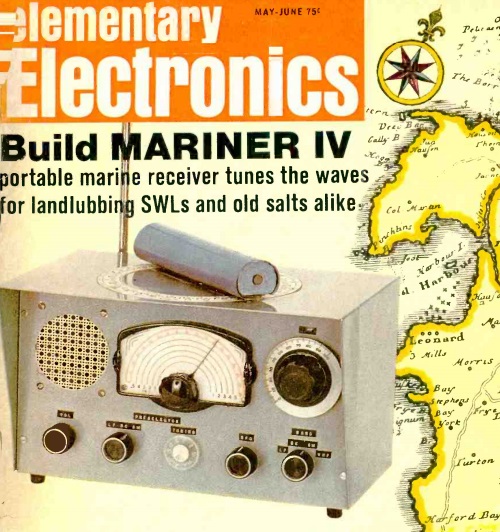 The plans for this ambitious looking receiver appeared fifty years ago in the May-June 1968 issue of Elementary Electronics. The transistorized set is written up as being for the SWL, but as the design suggests, the article points out that it’s also a suitable receiver for the “yachtsman.”
The plans for this ambitious looking receiver appeared fifty years ago in the May-June 1968 issue of Elementary Electronics. The transistorized set is written up as being for the SWL, but as the design suggests, the article points out that it’s also a suitable receiver for the “yachtsman.”
Construction is simplified by the inclusion of two pre-wired circuit boards available from Lafayette, the IF amplifier and audio amplifier stages. An additional four transistors make up the portions of the circuit that needed to be built. The completed receiver tuned longwave (150-420 kHz), standard broadcast (550 to 1700 kHz), and shortwave (1.6 to 4.3 MHz). In addition, a separate detector tuned VHF (144-162 MHz). A BFO was included for tuning in CW signals.
The actual construction consisted of building four separate modules, and then assembling them into the completed unit. There were actually two bandswitches, one for the preselector stage, and another for the main receiver. Switching bands meant flipping both switches.
While not explained in the article, the purpose of the rotating loopstick antenna was for use in radio direction finding, as explained in an earlier post.
